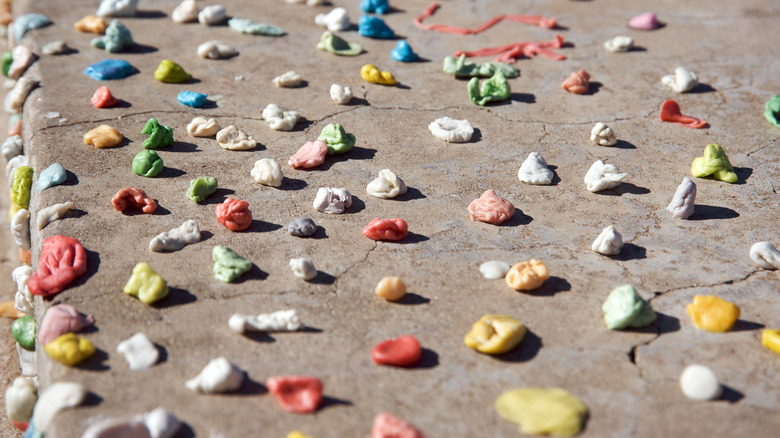Why The Flavor In Bubble Gum Doesn't Last Long
We may receive a commission on purchases made from links.
Bubble gum elicits a unique memory for everyone. Maybe you recall sharing it with friends during recess, buying a large pack with tooth fairy money, or trying your first piece of blue raspberry Hubba Bubba only to lose that juicy flavor after a few minutes. This quickly diminishing taste seems to be a universal experience — bubble gum is notorious for losing its essence within minutes of popping a piece into your mouth, but why? It has to do with the specific ingredients.
The core ingredients in bubble gum are gum base, sweeteners, flavorings, softeners, and artificial coloring. While the gum base is long-lasting and doesn't dissolve with saliva, the sweeteners and flavorings that initially spike your interest are water-soluble, making bubble gum lose its flavor quickly. The base provides the "chew," creating elasticity that allows for bigger bubbles, while sweeteners and flavorings make the gum taste good and give it that distinctive cotton candy flavor that many bubble gums are known for. Softeners like glycerin keep the gum pliable, while artificial coloring makes it visually appealing by dyeing the individual pieces enticing shades of pink.
How bubble gum ingredients make for a short-lived flavor experience
Gum base is made from a combination of waxes, resin, and elastomers. The elasticity and stretch that come from the gum base allow the bubble gum to withstand repeated chewing without breaking down. That's why you could technically munch on the same piece of gum for hours without it dissolving in your mouth. Flavorings and sweeteners don't have the same durability and are water-soluble, meaning they start to dissolve the moment they hit your tongue and only give you a burst of initial flavor that quickly fades into a happy memory.
The science behind modern bubble gum is both complex and intricate, evolving over the centuries from ancient practices, such as the Mayan habit of stripping sapodilla trees for "chicle" or chewy bark. These days if you look at a pack of Bubble Yum Bubble Gum, you'll usually find an ingredient list that includes multiple artificial elements (something that could be bad news for chewing gum producers as public perceptions of ultra-processed food change). Unlike the many treats you can make homemade versions of — DIY Reese's Pieces, for example — you can't easily make your own bubble gum at home.
Still, despite all this modern food engineering, bubble gum flavor remains woefully short-lived. Scientists are always looking for solutions, though, which is why certain chewing gum brands have introduced flavor crystals into some products. This helps release minty bursts in stages as the individual crystals break down, leading to a longer-lasting gum flavor that puts the quick fade of bubble gum to shame.

